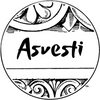Painting Materials List: Materials and Supplies For Your Next Project
Embarking on a painting journey is an exhilarating endeavor, whether you're a seasoned artist or just starting to dabble in the colorful world of art. Central to any artist's toolkit are the painting materials and supplies that form the foundation of creative expression. Let's delve into the essential components that comprise a comprehensive painting materials list, including those specifically needed for wall painting.

Canvas or Surface
Every masterpiece starts with a blank canvas, quite literally. Traditionalists often opt for stretched canvases made from cotton or linen for their smooth texture and durability. Alternatively, artists may choose canvas panels or boards for a more rigid surface. For wall painting projects, the surface could range from drywall to plaster, each requiring specific preparation and priming.
Paints
Paints: The heart of any painting endeavor lies in the pigmented liquids that bring visions to life. Oil paints, known for their rich colors and slow drying time, offer versatility and depth. Many contemporary artists favor acrylic paints because of their quick drying times and vibrant colors. Watercolors provide a translucent effect, ideal for delicate washes and transparent layers. Each type of paint offers unique characteristics, allowing artists to experiment and find their preferred medium.
Brushes
An artist's brush collection is akin to a musician's instrument ensemble. A variety of brushes cater to different techniques and styles. Round brushes for intricate details, flat brushes for broad strokes, and fan brushes for blending and texture are just a few examples. For wall painting, larger brushes such as rollers and wide paintbrushes have become indispensable tools for covering expansive surfaces efficiently.
Palette
A painter's palette serves as both a mixing surface and a holding area for paints during the creative process. Traditional palettes come in wood or plastic, while disposable options like paper or tear-off sheets offer convenience. Some artists even utilize unconventional surfaces like glass or ceramic tiles for their mixing needs.
Easel
While not strictly necessary, an easel provides a practical and ergonomic solution for holding canvases or boards at a comfortable working height. Portable easels allow artists to paint en plein air, capturing the essence of landscapes and scenes directly from nature.
Solvents and Mediums
Oil painters rely on solvents like turpentine or mineral spirits for thinning paint and cleaning brushes. Acrylic painters use water for dilution and cleanup. Additionally, mediums such as gels, varnishes, and glazing liquids modify paint properties, offering effects like texture, gloss, or transparency.
Protective Gear
Safety should never be overlooked in the pursuit of artistic expression. Gloves, aprons, and respirators safeguard against exposure to harmful chemicals present in paints and solvents. Adequate ventilation in the workspace is also crucial, especially when working with oil-based paints or spray applications.
Assembling the supplies needed for painting is akin to preparing for a grand adventure, with each material and tool contributing to the artistic voyage. The right combination of painting materials sets the stage for boundless inspiration and innovation, Whether you're a novice exploring the basics or a seasoned artist pushing the boundaries of creativity. Visit asvesti.com for more